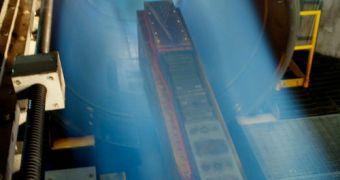With the successful testing of the X-51A Waverider aircraft, the United States Air Force (USAF) is currently trembling in anticipation of the future of warfare. Analysts believe that the recent test flight, which saw that craft break down the world record for the longest hypersonic flight, will allow engineers a solid starting point in developing this technology, perhaps even at the scale needed to power up larger spacecraft. In other words, one of the main applications for the new engines is the creation of ships that would make access to space more affordable for the masses.
“We could have in the future such things as hypersonic weapons that fly 600 nautical miles in 10 minutes,” the X-51A Program Manager, Charlie Brink, said during a teleconference on June 1. He is based at the Wright-Patterson Air Force Base's Air Force Research Laboratory (AFRL). For the X-51A project, the USAF collaborated with NASA, the US Navy, and the US Defense Advanced Research Projects Agency (DARPA).
The thing that makes hypersonic aircraft so special – in addition to their high speed – is the fact that, in essence, they can ride the shock wave they produce when flying. A scramjet engine works by channeling the airflow into a motor, where the air is used to ignite a fuel mix. The resulting explosions thrust the aircraft forward, but the main thing to consider here is that the engines do not draw in air actively, as in through fans or propellers. The X-51A Waverider is, for example, capable of flying up to Mach 5, as in five times the speed of sound.
“NASA would ultimately like to enable large vehicles for access to space using air-breathing propulsion,” NASA Langley Research Center expert James Pittman, who is the principal investigator of hypersonics projects at the American space agency, explained. “I would say that within the next 15 to 30 years – I'll give you the broad side – but probably 15 to 20 years, you could start to see this technology being expanded to the point where you could get aircraft into outer space,” the hypersonics Director and X-51 Program Manager of Boeing Phantom Works/Defense, Joseph Vogel, said.
“There are certainly operational constraints that have to be overcome, but we believe that this technology can enable missions that aren't possible today,” the Head of the Langley hypersonic air-breathing propulsion branch, Kenneth Rock, concluded, quoted by Space. .

 14 DAY TRIAL //
14 DAY TRIAL //